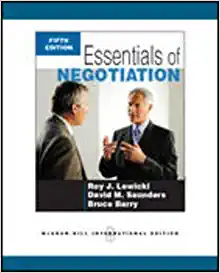Question
Keyave building a tower:https://youtu.be/1rzki-qpuZ4 Instructions the video (link in Brightspace - Assignments), and take notes on what the child(ren) are doing and saying. Include their
"Keyave building a tower":https://youtu.be/1rzki-qpuZ4
Instructions
the video (link in Brightspace - Assignments), and take notes on what the child(ren) are doing and saying. Include their words in quotation marks. Include conversations with any adults in the room. Using your observation notes, along with what you have learned in this class, please complete each section below.
Description
In this section, use your notes to write a description of what you observed in the video. First, write a brief description of the environment, and the materials in the setting. Next, write a detailed, step-by-step description of what you observed in the order it took place in the video.Be sure to use objective language: Avoid using labels such as cute, bossy, aggressive, little, angry, happy, advanced, etc. Instead, simply describe what the child says and does. Avoid opinions. Do not comment on what is observed. Instead, this section should only include a detailed description of what was observed, not what you think about it.
Interpretation: based on what you observed, what did you notice?
In this section, based on the details in your description, what do you notice in terms of the child(ren)'s development and early childhood education? Use specific details from your description as evidence for your interpretation.
Questions to guide your interpretation: How is the child playing? How does the environment support their play? What domains of development are supported in this observation (fine motor, gross motor, language, cognition, and/or socioemotional). What role does the environment play in supporting development (teacher, environment, materials).
Influence: connected to concepts from our course
Can you see how this setting has been influenced by a particular model, curriculum, or philosophy? What do you notice from your observation that links to ideas from one or more of the following: Developmentally Appropriate Practice (DAP), Play-based, anti-bias, Reggio Emilia, Montessori, Waldorf, High Scope, Head Start, Bank Street, etc.
Plan: based on what you observed, what would you do next?
In this section, pretend you are the teacher in this setting. What would you do or say next in order to support the child(ren)'s development? This can be a conversation or a planned activity. Use what you observed in order to make a good teaching decision about what comes next.
Tips for Success
Take careful, detailed notes while watching the video. You can pause the video and re-watch it as many times as needed.
In the Description Section, be sure to use objective language throughout. In this section, it is important to remain focused on observed behavior. Do not include any interpretive or reflective statements. All actions and interactions should be described in vivid detail and the child's language should be quoted word-for-word in quotation marks. It should be written in the order the action took place. If you ask a friend to read your description, they should have a good idea of what took place (what was said and what happened) without watching the video.
In the Interpretation Section, be sure touse observed behaviors as evidence. You cannot comment on anything other than what happens on the video. For example, don't say "her parents must paint with her at home because she seemed very comfortable holding the paintbrush". That is not based on evidence from the observation. Instead, you can say "she held the paintbrush firmly and painted a full circle, which demonstrates fine-motor skills".
In the Influence Section, reflect on what you have learned about Early Childhood Education (models, curriculum, philosophy) and about Early Childhood Educators (qualities and competencies). In the video, can you see things that connect to what you have learned so far? In this section, the goal is to explain that connection. How would you explain this to your friend who doesn't know anything about the profession and its expectations? What do you see in the observation that your friend would not see because they have not taken this class!
In the Plan Section this is your chance to implement what you have learned and imagine what you would do next if you were the teacher in the room. All teachers must make teaching decisions based on their observations. This is your chance to practice this skill. To make this meaningful, you really have to focus on what you are observing about the child(ren) and think about what would support their development. How can I be warm and responsive and kind and at the same time make a good decision about how to support their development?
Step by Step Solution
There are 3 Steps involved in it
Step: 1

Get Instant Access to Expert-Tailored Solutions
See step-by-step solutions with expert insights and AI powered tools for academic success
Step: 2

Step: 3

Ace Your Homework with AI
Get the answers you need in no time with our AI-driven, step-by-step assistance
Get Started


